Planting lavender seeds for seedlings at home: sowing dates and growing rules
Lavender is a completely unique ornamental and medicinal plant that won boundless love two thousand years ago for its pleasant spicy aroma, traditional purple or purple fluffy beauty and wonderful culinary qualities. Currently, lavender is widely used to create borders and ridges, it is advantageous to place it in pots, and it is also indispensable as a background plant. In addition, experienced gardeners will confirm that the smell of lavender is hateful to the Colorado beetle and moth. For this purpose, it is important to place the plant not only in the flower bed, but also in the garden. However, in order for the sea of these tender and cheerful spikelets to take root in your summer cottage, you need to keep in mind some of the features of their reproduction and proper planting in open ground. About all thisread in our material.
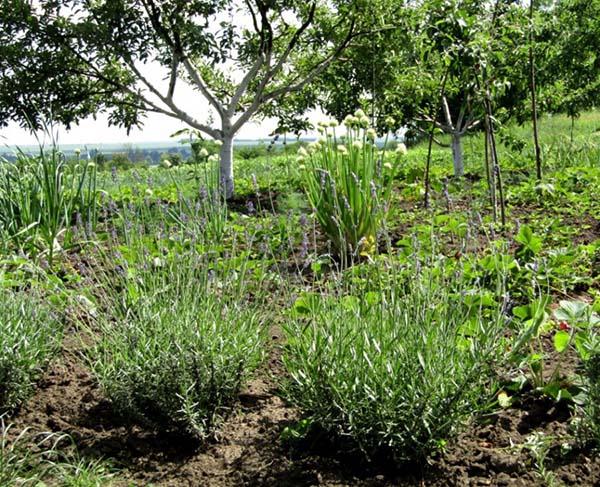
Content
Types and varieties of lavender
The most popular types of lavender are as follows:
- English (also called narrow-leaved);
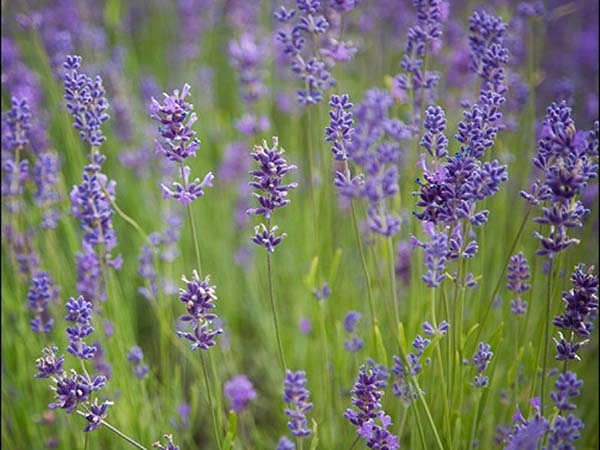
- French (also known as broadleaf)

- Dutch;
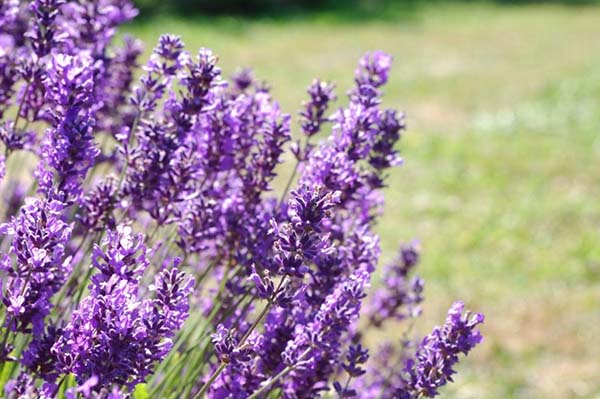
- Petiolate.

Reproduction methods
You can propagate lavender in the following ways:
- stem layering;
- dividing the bush;
- cuttings;
- seeds.
We will briefly talk about the essence of each of the breeding methods, and we will talk in more detail about how to grow lavender from seeds.
Stem layering
The easiest way to propagate lavender in the garden is with cuttings.
Step-by-step instructions for propagating lavender with stem layering are as follows:
- In the spring, it is necessary to lay one of the bush branches in a small depression, and then sprinkle it on top with soil with compost and water it.
- It will take several months for the cuttings to take root. During this time, you should constantly keep the soil moist.
- Once the cuttings are fully rooted (usually in the fall), they should be cut from the mother bush. Remember to treat the cut area to prevent it from starting to rot (for example, with crushed coal).
- Transplant the rooted cuttings to a new location in the garden next spring with the earthy clod.
Video: propagation of lavender by stem layering
By dividing the bush
In order to propagate lavender by dividing the bush, you need to do the following manipulations:
- After pruning in the fall, spud the lavender bushes well, filling the space between the stems with soil.
- Next spring, it will be necessary to huddle the shrub again well (although the reproduction procedure can be carried out already during this period).
- In the fall, you should divide the bush into several parts, planting the plant together with an earthen lump in a previously dug hole in a new place.
- Fill the hole with soil and tamp lightly, then water liberally.
Important! The root system of lavender can reach a length of several meters, so it is advisable to replant with small bushes.
Cuttings
Note! The site has a separate material about how to grow lavender from cuttings at home.
Growing lavender from seeds
It is not so easy to grow lavender from seeds, moreover, it will take a lot of time. Therefore, first you need to decide on the timing of planting and plant the seeds for stratification.
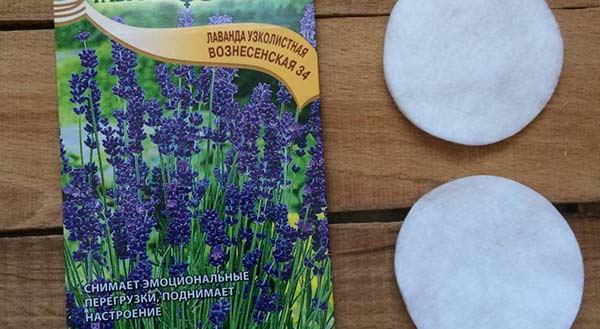
Important! Often problems with growing lavender from seeds are due to the fact that only fresh lavender seeds germinate well, so when buying, you should first of all pay attention not to their shelf life, but to collection date.
Sowing dates
You can sow lavender for seeds both in spring and autumn, just calculate in advance the time for stratification. For example, plant seeds for stratification in January so that they can be sown in pots in March, and in May to plant lavender seedlings in open ground.
Stratification
Lavender seeds require mandatory stratification, in other words, the seeds must be kept for some time at a low temperature and in a humid environment. This is done, firstly, in order to create natural conditions under which the seeds germinate. Secondly, it triggers embryonic sleep, that is, when the temperature drops, the seeds fall asleep, and as soon as it starts to rise, they immediately wake up. Thirdly, this is a kind of shock therapy.
Methods for stratification of lavender seeds:
In wet sand
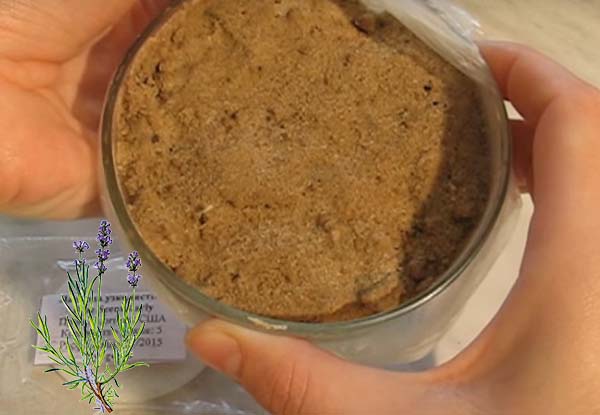
- Take the sand, then you need to sift it, rinse it and bake it in the oven for 30-40 minutes.
- Pour sand into a bowl and moisten it from a spray bottle (water should preferably be thawed or settled).
- Sprinkle lavender seeds onto the wet sand.
- Sprinkle a little dry sand on top.
- Place the bowl in a bag and wrap it around the container.
- Place the container in the lower drawer of the refrigerator (where the temperature ranges from + 3… - + 5 degrees) for 1-2 months.
On cotton pads
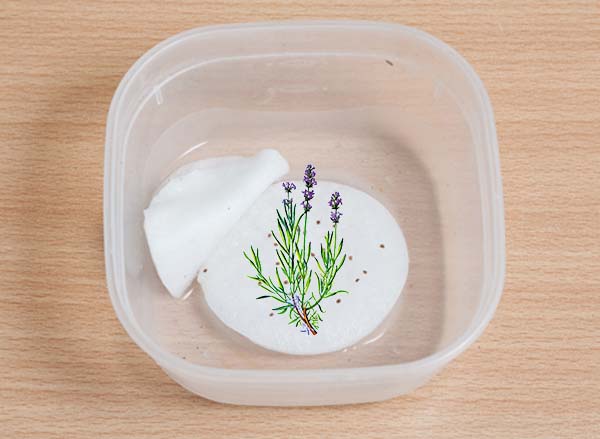
- Take a small lid and a couple of cotton pads.
- Put 1 cotton pad on the cover and moisten it from the spray bottle.
- Sprinkle the seeds onto a damp cotton pad.
- Cover with a second cotton pad and spray again with a spray bottle.
- Put moistened cotton pads with seeds inside in a plastic bag (it is convenient to do this with a ZIP bag), which should be previously disinfected with hydrogen peroxide.
- Place the bag with cotton pads in the lower drawer of the refrigerator (where the temperature ranges from +3 ..-. + 5 degrees), again for 1-2 months.
On a wet wipe
- The method is identical to the previous one, only instead of two cotton pads you use one napkin, which you just need to fold in half.
In a pot of soil
- Take a pot or any other small container, fill it with universal soil (or coconut substrate) and sand in equal proportions.
- Pour an additional small layer of sand on top.
- Moisten the surface with a spray bottle.
- Sow the seeds and sprinkle lightly with sand on top.
- Put the pot in a bag and tie it or secure it with an elastic band.
- Place the pot in the lower drawer of the refrigerator (where the temperature ranges from + 3 ... - + 5 degrees) also for 1-2 months.
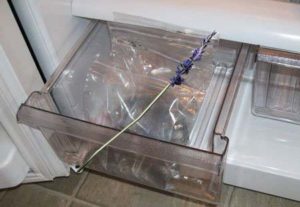
Important! It is necessary ventilate containers at least once a week. We just open the bags and let the fresh air go inside! First for 5 minutes, and then gradually increase to 15-20 minutes. For the same time, after airing, we leave it at room conditions. At the end of stratification, about 1-2 weeks before sowing, after airing, we begin to leave the seeds in room conditions for 30-60-120-180 ... minutes and so on until the whole day in the room, and at night in the refrigerator.
This stratification treatment will help the lavender seeds germinate faster.
Sowing seeds
When the stratification is over (the seeds will germinate), and the time comes to sow lavender seeds in a pot, you will need to do the following:
- Pick up small planting containers with drainage holes.
- Prepare a soil mixture, for example, take a universal soil for seedlings and mix it with sand in equal parts. Or take garden soil, humus and river sand in a ratio of 3: 2: 1.
- Sow seeds on the surface of the soil (you can together with sand, if you used method 1 of stratification) and lightly sprinkle with sand.
- Moisten with a spray bottle with warm water.
- Cover with foil and put on a light and warm windowsill, where the temperature is about + 18-22 degrees.
Video: growing lavender seedlings from seeds
By the way! If you live in the south, you can sow lavender seeds right away in the fall in open ground, in which during the winter (especially if the winter is snowy) they will undergo natural stratification, and in the spring the first shoots will appear. In this case, the seeds should be buried 3-4 cm into the soil.
This method is not suitable for the Middle zone (Moscow region), Siberia and the Urals!
Seedling care after sowing
After about 2-3 weeks, the first sprouts of lavender seedlings will begin to appear.
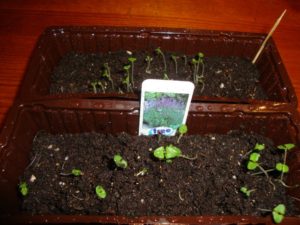
Further care consists in regular watering (at first, light spraying. When you grow up more you can water from a watering can) and maintaining temperature and light conditions.
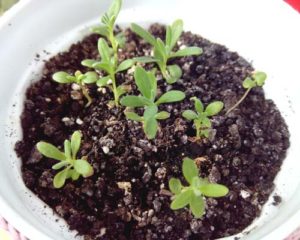
Picking
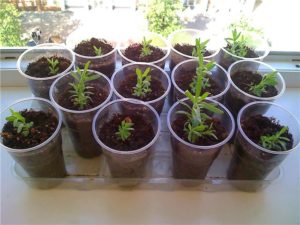
Diving lavender is not difficult at all. The procedure is more than standard. When the lavender seedlings have 2-3 true leaves, you will need to do the following:
- To begin with, water the plantings abundantly so that the seedlings are easily accessible. As well as soil in containers where you will dive.
- Make indentations in new sapling houses.
- With your hands or with the help of special tools, carefully take out the seedling and deepen it to the cotyledon leaves.
Video: picking lavender seedlings
Further care is no different.Water and wait for the lavender seedlings to grow old enough. Then plant it in pots or open ground when weather conditions permit.

Worth knowing! Typically, perennial lavender grown from seeds,does not bloom in the first yearbecause it is gaining strength and growing green mass. And already in the 2nd year, she will certainly delight you with her beautiful flowers. Although there are some varieties of lavender that can bloom in the first yeareg annuals.
Planting lavender in open ground: choosing the best place in the garden
Landing dates
Planting lavender outdoors, as a rule, occurs in the last spring month of May. This applies both to the method in which the seedlings are grown from cuttings and from seeds.
Place and soil
The place for planting lavender should be sunny. If you plant it in the shade, then the flowering will be less abundant and bright. When choosing a place, it is also worth considering that it is optimal to plant a plant in high clubs, humid lowlands will not suit it. Moreover, it is impossible for groundwater to pass close by.

The optimal soil for planting lavender is sandy loam, sourness. - 6.5-7.5 pH. But just in case, before landing in the ground, it is still advisable to make wood ash (or lime), because the plant does not tolerate acidic soils.
You can successfully grow lavender on loam, but you will have to make good drainage and improve the soil (loosen it up) by adding compost to it.
As for landscape design, blooming lavender will look great next to garden paths (as curbs), on alpine slides and rockeries.
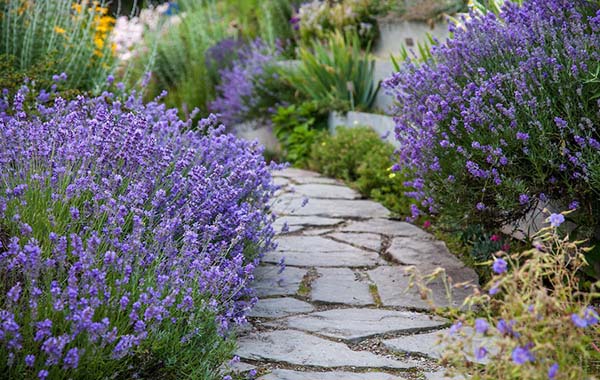
As for the distance between plantings, if you want to get a hedge, plant 1/2 of their estimated height, otherwise the distance between flowers should be equal to their height.
By the way! Lavender is great at attracting beneficial pollinating insects and scaring away harmful insects such as aphids. Therefore, it would be nice to sit her next to with roses.
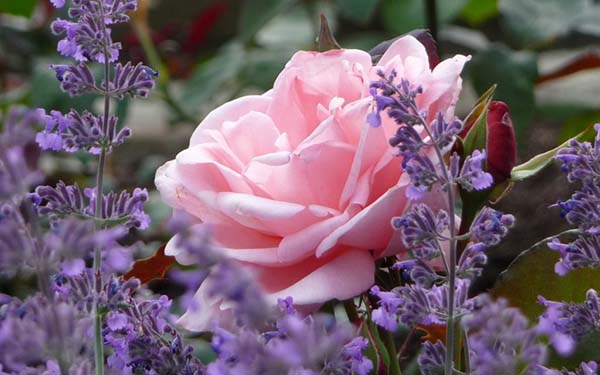
Outdoor lavender care
Lavender cannot be called a completely unpretentious plant, which every novice gardener can cope with growing, but you cannot refer to it as particularly demanding.
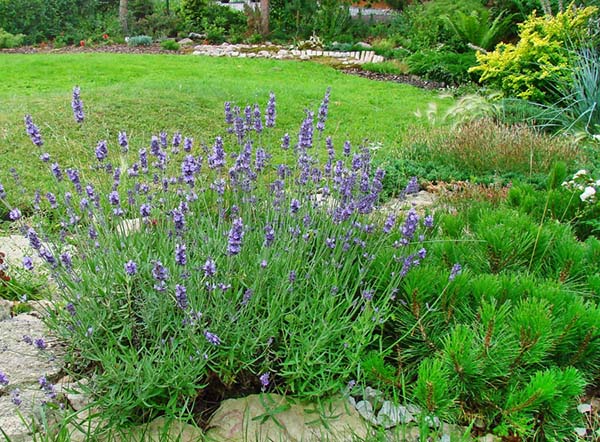
Thus, further care for lavender after planting in open ground consists in the following garden manipulations: watering, weeding and loosening, hilling, fertilizing, pruning and shelter for the winter.
Watering lavender must be carried out strictly as the soil dries. The plant does not like when the soil is excessively moist, but it should not be overdried, otherwise it will negatively affect its flowering.
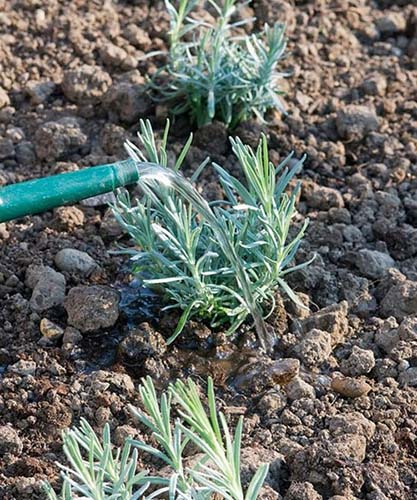
Weeds are an unwelcome guest in a lavender bed, so from time to time it is necessary loosen and weed, and even better to take care of its protection from weeds in advance. This is perfect for this mulch (grass, peat, bark, compost). But only the trunk circle should be mulched, the trunk itself should not be covered with mulch, otherwise the plant may rot.
To stimulate the growth of new young shoots, lavender is needed in spring and autumn.spud.
Feed lavender follows in several stages. Spring feeding should include nitrogen fertilizers for building up green mass, for example, urea (at the rate of 1 tbsp. Spoon for 1 bucket of water). During the budding period and during flowering, the plant requires a lot of potassium, which means that you need to perform potassium dressing, for example, potassium sulfate or potassium nitrate. A far more popular organic potash fertilizer is solution wood ash (100 grams per bucket of water).
By the way! If you use compost as a mulching material, then you most likely will not need additional feeding.
After the lavender has faded, its peduncles should be promptlytrim.

Video: breeding, planting and caring for lavender
Preparing lavender for winter
English lavender is quite frost-resistant, which cannot be said about its French variety, which it is desirable to grow in a pot, and carry it to a warmed loggia or to a windowsill for the winter.

Important! Detailed information about the method preparing lavender for winter (pruning, shelter) read in this article.
If it is a hundred times more interesting for you to grow lavender yourself, to put your soul into a wonderful flower, then please be patient and love, as well as our proven methods of proper planting and caring for the plant described above.
Video: breeding and planting lavender

